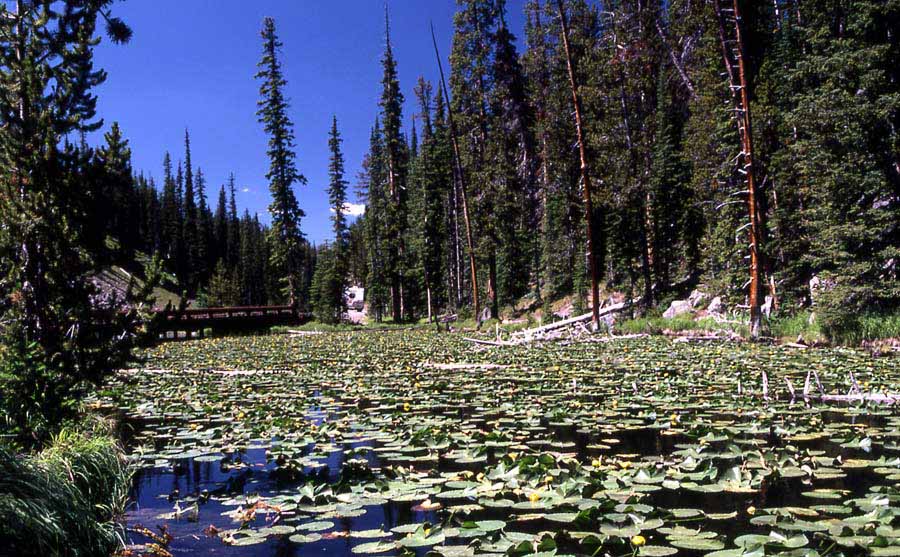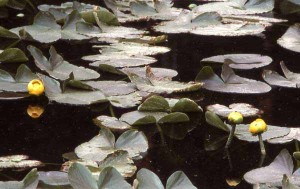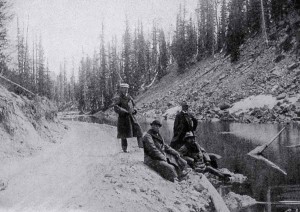
By Ruffin Prevost
Yellowstone National Park planners are seeking input on a plan to rebuild a historic bridge that takes visitors over a portion of Isa Lake — a pond that straddles the continental divide and drains to both the Atlantic and Pacific oceans.
The 70-year-old Isa Lake bridge is located atop Craig Pass at an elevation of 8,262 feet. A September 2010 inspection report from the Federal Highway Administration found the bridge in poor condition and recommended replacing it.
Isa Lake, which actually is more pond than lake, sits within Craig Pass, and is famous because it drains to two different oceans, but does so “backwards,” according to the National Park Service. Isa Lake has been described as “the silver ribbon that connects two oceans.”

“At one time, it was probably the only lake on Earth that drained naturally backwards to two oceans, the east side draining to the Pacific and the west side to the Atlantic,” states the 2012 edition of Yellowstone Resources and Issues Handbook, a Park Service reference guide.
Isa Lake’s water levels typically don’t fluctuate much during most of the year. But during the peak of spring runoff after a snowy winter, it will drain from the east into Shoshone Lake and the Lewis River in Yellowstone, then into the Snake River and the Columbia River, emptying in the Pacific. From the west, it feeds the park’s Firehole River, which flows into the Missouri River, feeding the Mississippi River on its way to the Gulf of Mexico.
The road at Craig Pass is labeled as the continental divide, but it is from the hills above each side of the pass that spring snowmelt feeds Isa Lake.
Isa Lake atop Craig Pass is located about seven miles south of Old Faithful on the Grand Loop Road, and both names were bestowed by Hiram Chittenden, an early Yellowstone road builder with the U.S. Army Corps of Engineers. Chittenden mapped the pass in 1891, while looking for the best route for a road between Old Faithful and West Thumb.

Chittenden named Craig Pass in honor of Ida Craig, the first visitor to cross the pass after the road was completed, and a daughter of Chittenden’s friend, James Craig, according to Yellowstone historian Lee Whittlesey’s book, Yellowstone Place Names.
How Isa Lake got its name remains a bit more of a mystery. In 1893, Northern Pacific Railroad officials named Isa Lake after Isabel Jelke. Her exact connections to the railroad, the park or Chittenden are not fully known, according to the National Park Service website. But in 1916, Chittenden wrote a poem about his “discovery” of Isa Lake. It included this cryptic section:
Thou hast no name; pray, wilt thou deign to bear
The name of her who first has sung of thee?
Isa Lake has no fish, and typically freezes over in winter. In summer, it is often covered with yellow pond lilies (Nuphar polysepala).
Park planners are considering alternatives for rebuilding or replacing the Isa Lake bridge, including building a new bridge designed to meet modern traffic safety requirements that would retain the historic character of the existing bridge.
Parking areas and pullouts near the bridge would also be repaved. During reconstruction, the road would remain open via a temporary bridge spanning Isa Lake.
Additional details about the bridge plan are available in Park Service planning documents and on the Park Service website.
Comments or questions about the plan may be made online or sent by Aug. 24 to the Isa Lake Bridge Reconstruction Plan, Attention: Compliance Office, National Park Service, P.O. Box 168, Yellowstone National Park, Wyoming 82190.
Contact Ruffin Prevost at 307-213-9818 or [email protected].
